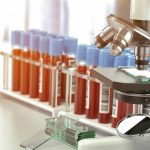Regular physical activity is key to prevention and treatment of diseases and injuries
The recipe to systematically incorporate physical activity in prevention and treatment is excellent translational research, where strong collaborations between researchers at universities and clinicians at hospitals create the foundation for new insights, innovation, and implementation in clinical practice with direct value and impact on patient care.
Professor and CAG Chair, Flemming Dela and Professor and CAG Vice-Chair, Michael Kjær started CAG Physical Activity and Sport in Clinical Medicine (CAG imPAct) in 2017. CAG imPAct aim to increase the synergy between research, clinical activity, and education within the area of physical activity in prevention, treatment, and rehabilitation.
Regular physical activity has beneficial effects in the prevention and treatment of chronic diseases. Further, physical activity can improve the treatment and rehabilitation in patients after trauma and injury and prevent future musculoskeletal disorders. Yet, the use of physical activity in daily clinical medical practice is very limited.
“Linking research in physical activity and medicine is essential for understanding the importance of physical activity in prevention, treatment, and rehabilitation. This is only possible due to excellent translational research that takes place between basic and clinical research environments at both universities and hospitals”, says CAG Chair, Professor Flemming Dela.
Physical inactivity and sedentary behavior are one of the greatest public health challenges and considered responsible for 40 million deaths worldwide each year and include four major disease types (cardiovascular, cancers, respiratory and diabetes). The role of physical activity in complex diseases is not fully elucidated, and the interplay between physical activity and pharmacological treatment is poorly understood.
CAG imPAct has initiated translational research activity to directly couple laboratory and clinical research groups within physical activity. Activities and collaboration all together leads to a cross-fertilization of disciplines across hospitals and university faculties/institutes.
The importance of excellent research and strong collaboration
CAG imPAct has documented the beneficial use of regular physical activity and provided evidence for specific doses of exercise used within diseases like pre-diabetes, type 2-diabetes, tendon pain, hip disorders, asthma, breast-cancer, and GI-cancer. Further, the use of physical training to improve muscle mass has been shown to be beneficial for age-related loss of function and loss of muscle mass in both healthy and hospitalized elderly patients.
At this point, these clinical findings for several diseases in relation to both training and/or intake of medication have been coupled to basic science studies that have been able to characterize aspects of the pathogenesis of disease development in e.g. cancer, type-2 diabetes, tendinopathy, and muscle loss.
Implementation in clinical practice – how does it work?
CAG imPAct are working with different boards for several medical specialties (forskellige sundhedsfaglige råd), where a number of CAG imPAct keymembers are members of these boards. To ensure clinical impact in practice, the discoveries found this far in the research projects will be advanced to become part of the written guidelines for several disease conditions.
The CAG imPAct Team
CAG imPAct consists of CAG Chair, Professor Flemming Dela, Faculty of Health and Medical Sciences, University of Copenhagen and CAG Vice-Chair, Professor Michael Kjær, Bispebjerg-Frederiksberg Hospital.
Three junior chairs, Associate Professor Morten Hostrup, Faculty of Natural Science, University of Copenhagen, MD PhD Jon Bjarke Jarløv Rasmussen, Rigshospitalet and PhD PostDoc Grith Stougaard Højfeldt, Copenhagen University Hosital – Bispebjerg Frederiksberg.
Steering committee with Clinical Professor Julie Gehl, Zealand University Hospital, Roskilde and Professor Jørgen Arendt Jensen, University of Copenhagen.
Alongside 28 CAG Keymembers from across the Capital Region of Denmark, Region Zealand, University of Copenhagen and DTU.








